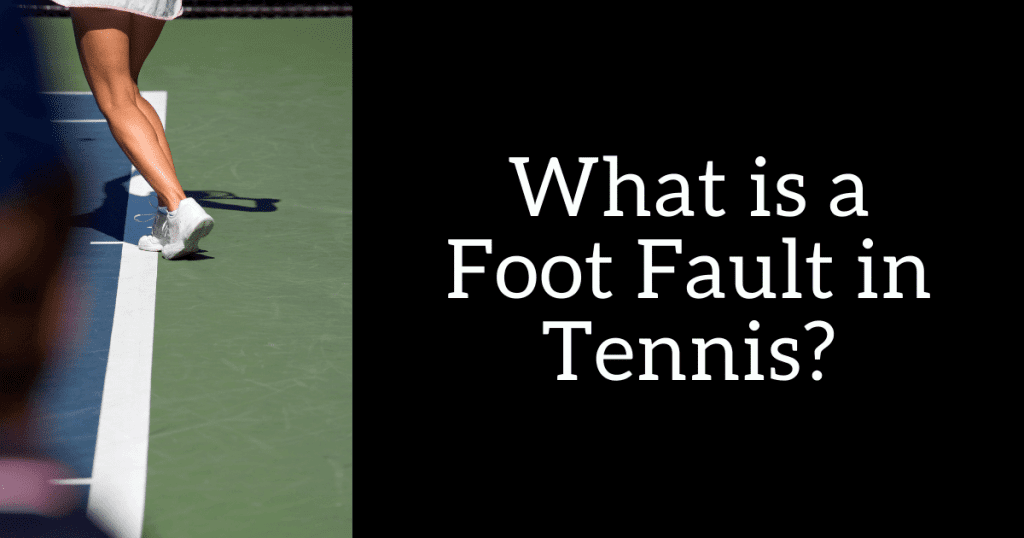If you are unclear what it means when you hear the term “foot fault” in tennis, keep reading to find out!
Contents
What is a Foot Fault?
Foot faulting occurs when the server’s foot touches or crosses any part of the baseline or center mark before contact is made with the ball.
A foot fault is called when any part of the server’s foot crosses or touches these boundaries before the ball is struck by the server.
When are Foot Faults Called?
According to the official rules of tennis, officials will call a foot fault for any of the following reasons:
- The server’s foot touches the baseline before or during contact with the ball
- The server’s foot has crossed the baseline before or during contact with the ball
- The server’s foot crosses the wrong side of the center mark before or during contact with the ball
- The server’s feet change position by walking or running. (Your feet can move slightly, but you can’t run up to the line and serve.)
Calling foot faults prevents the server from gaining an unfair advantage while serving.
The boundary lines of the tennis court are strictly enforced. There is no flexibility to interpret these boundaries.
Allowing the server to not adhere to the boundaries would act as an unfair advantage.
What is the Consequence of a Foot Fault?
A foot fault is treated as a regular fault.
If a player foot faults during their first serve, it would simply be their first fault. Their second serve would follow.
If they then made a second foot fault or faulted for any other reason, the result would be the server losing the point.
This also means that the server loses the point if they foot fault during their second serve, regardless of the reason for their first fault.
Are Foot Faults Strictly Enforced?

While it may seem like the benefits of a foot fault are negligible, the rules are enforced in tennis.
Players of all skill levels must learn the importance of avoiding foot faults while they are serving to avoid violating the foot fault rule.
In officiated tennis matches, a foot fault will always get called. Simply put, the serving player must not encroach into the court by crossing or touching the baseline while serving the ball.
How to Avoid Foot Fault Calls
As with most tennis skills, the best way to avoid getting penalized for foot faults is to practice serving properly.
When you are practicing, always keep your feet within the appropriate boundaries when you serve.
You may even want to ask a friend to watch you serve to make sure your feet are where they should be.
If need be, place your feet an inch or two back from the line. It might take some getting used to, but you will in time.
It can be difficult to tell for yourself so having a second set of eyes can be incredibly beneficial.
Forming good habits is the best way to avoid foot faults and other mistakes during while serving!
Check out other Tennis Tips for more info on Tennis Scoring, Aces, and so much more.

